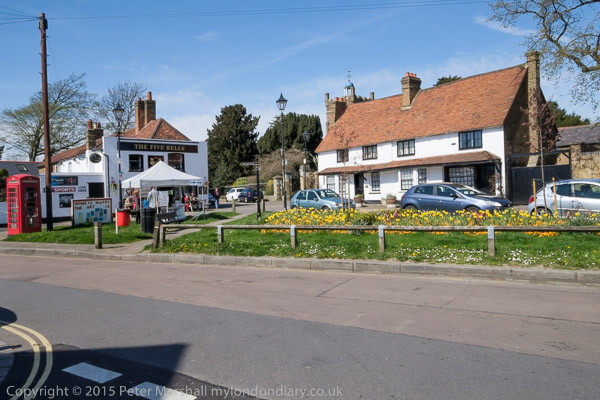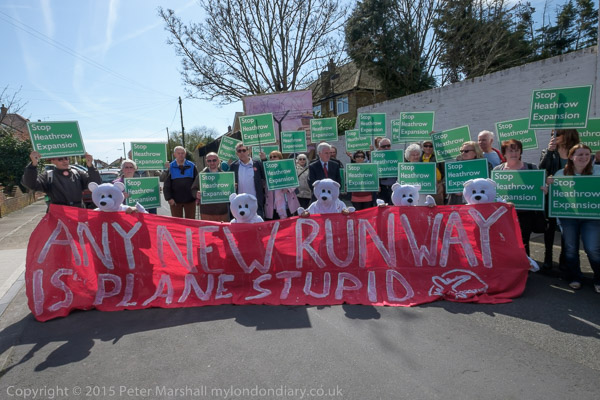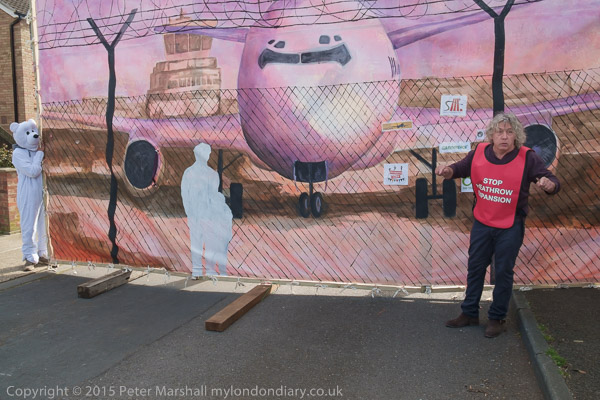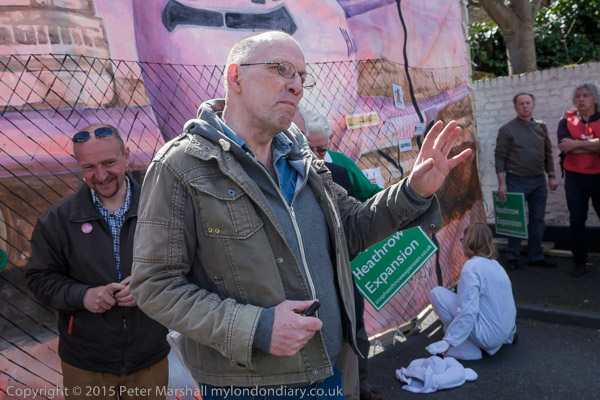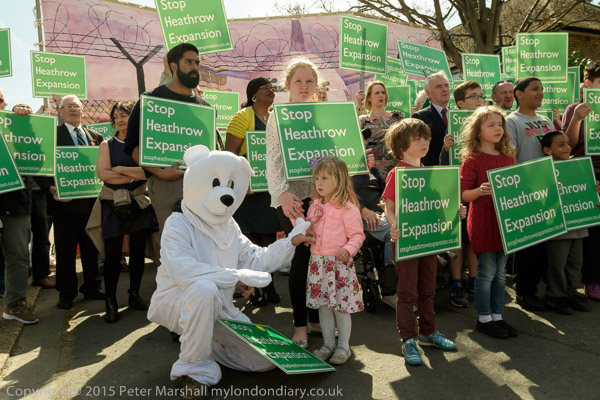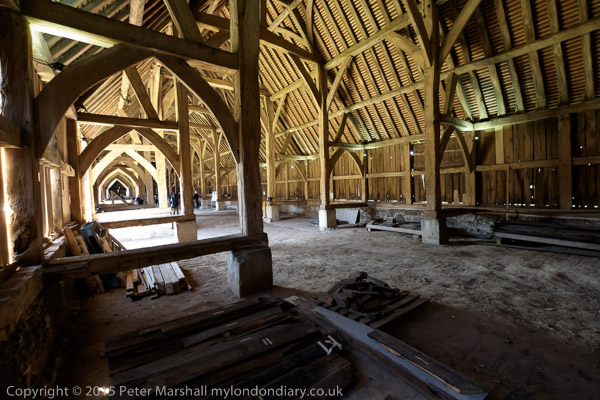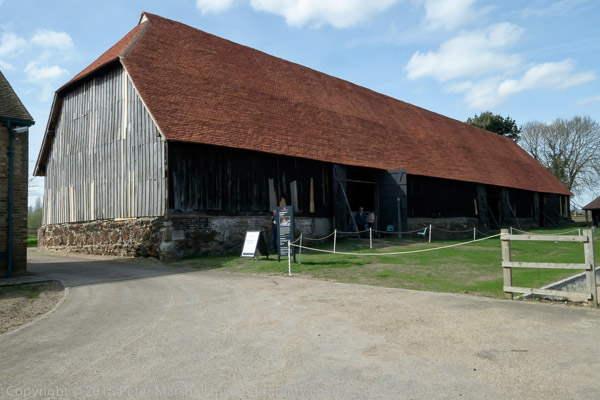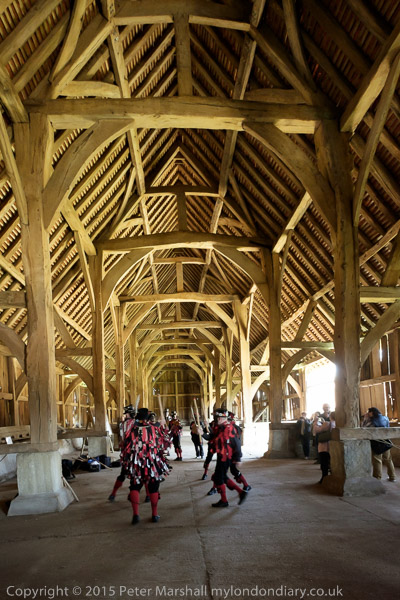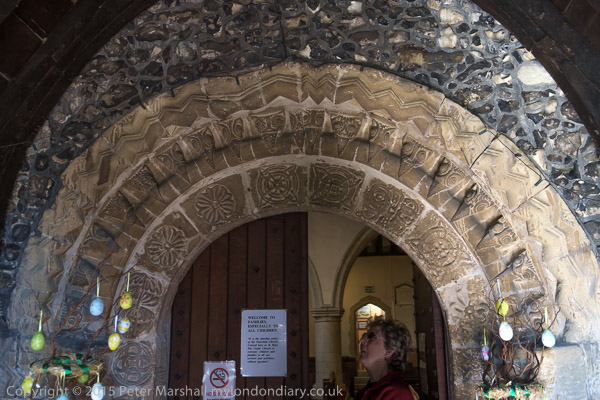Llawhaden Bridge, Church & Castle: My final post on my holiday at the start of September 2024 in Wales.

The last day of our holiday in Wales was a gloomy one so far as the weather was concerned, overcast and with occasional light rain interrupting the drizzle. It didn’t stop me from taking a rather long route into Narberth from our holiday cottage at Narberth Bridge in the morning with Linda, though it was a walk I’d made on my own a few days earlier, stopping then to take photographs in rather better weather and I made no more this time.

Back at the cottage after lunch we decided the weather would not put us off another walk and made plans to visit Llawhaden to view the church and castle and then to walk along a footpath to Robeston Wathen, where we would phone for a car to pick us up and take us back to Narberth.

It seemed a long drive mainly along narrow country lanes to take us to Llawhaden Bridge, a Grade II* scheduled monument. This medieval stone arch bridge is said to be “of national importance for its potential to enhance our knowledge of xmedieval or post-medieval construction techniques and transportation systems.” Wikipedia says it was built in the mid-18th century.

For us it was a convenient place to be dropped off and to take us across the Eastern Cleddau river, which here formed the boundary from Norman times between English and Welsh-speaking Wales.

Over the bridge we turned right, taking the road below the steep hill up to the village of Llawhaden to its church beside the river. It was unusual in being one of six parishes that straddled the linguistic border and was bilingual. The bridge is now on the Landsker Borderlands Trail that marks this divide.

St Aidan’s church was an impressive building from the outside, but relatively bare inside with only a few monuments on its wall, and just a little stained glass. This medieval church has an unusual double tower and is II* listed with a very complete description of the structure

Opposite the church is a steep path leading up around 80 metres to the village of Llawhaden, emerging close to the castle, though by the time I’d got to the top I was too out of breath to notice it and walked to the centre of the village before realising it was behind me.

Llawhaden was a far more important place back in the 12th and 13th century as it became the administrative centre of Dewisland, the land owned by the Bishops of St Davids which King Henry I had issued a charter as a Marcher Lordship – effectively an independent state.

The castle was first built as a smaller military castle to protect the area from the Welsh on the other side of the Cleddau river, but this was destroyed by the Welsh in 1193 was later replaced by the fortified palace for the Bishops whose remains we spent some time walking around and climbing up and down various parts. Much of it was “embellished” by Bishop Houghton in the 14th century, but later after it fell into disuse, much of the stones were used for other buildings in the area.

The site is well presented and free to visit, but rather off the beaten track despite being only a couple of miles from the A40. There were only two other visitors in the 25 minutes or so we spent there.

We might have spent longer, but the only one of us with a mobile phone realised she had left the piece of paper on which she had written the phone number for our ride home back in Narberth. We tried to contact others who might know it without success and our emails to the driver were only read the following day. We decided we had to walk back the whole way and continued on the route, going back down the hill and back over Llawhaden Bridge to the bridle way and footpath leading to Robeston Wathen.

This started well, but after around 500 metres we found the path flooded and decided not to try to wade through, turning around and going back to the bridge again. We were tired by the time we had walked back the 4 miles along the route we had been driven on our way to Llawhaden.
Just a few more pictures at Llawhaden Bridge, Church & Castle.
Flickr – Facebook – My London Diary – Hull Photos – Lea Valley – Paris
London’s Industrial Heritage – London Photos
All photographs on this page are copyright © Peter Marshall.
Contact me to buy prints or licence to reproduce.
